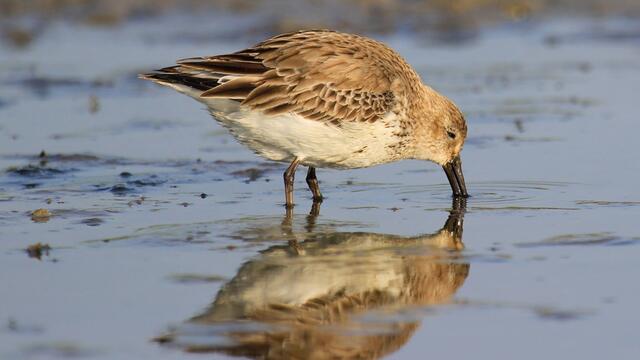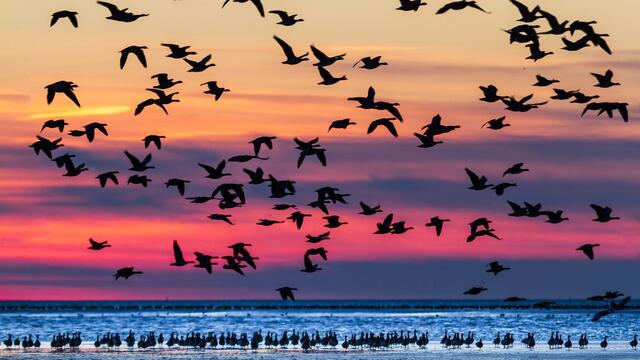Fact
The amount of biomass found on mussel beds is 2,000 g per m², compared to about 65 g per m² on tidal flats.
Fact
The Wadden Sea is one of the most important areas for migratory birds in the world. Around 6 million migratory birds can be found in the Wadden Sea at one time, and an average of 10-12 million pass through it in autumn and spring every year.
Fact
The Wadden Sea demonstrates high faunal diversity compared to other coastal wetlands, with over 10,000 species found. The availability of food and the low level of disturbance are essential factors supporting survival of migratory species. Global biodiversity is reliant on the Wadden Sea.
Fact
Many of the 140 fish species recorded in the Wadden Sea are visiting from the North Sea. Others use the Wadden Sea as a passage during their migration from the sea to the rivers, as an important nursery area for juveniles or as a spawning area in the North Sea. About 20 species are resident in the Wadden Sea and leave the tidal area only during exceptionally cold winters.
Fact
A regular census of 31 breeding bird species found 469,000 breeding pairs. This indicates favourable food availability and natural breeding success. Six species have over 25 % of their north-western European population breeding in the Wadden Sea.
Fact
Since 1978, Denmark, Germany and the Netherlands have been cooperating to ensure transboundary protection and management of the Wadden Sea as a shared natural entity. Almost the entire Wadden Sea is protected by national parks and nature reserves.
Fact
were counted in summer 2020 on the sandbanks of the Wadden Sea – a steadily increasing number of harbour seals since the first Wadden Sea-wide seal counts in 1975. The total population is estimated to 41,700 individuals.


